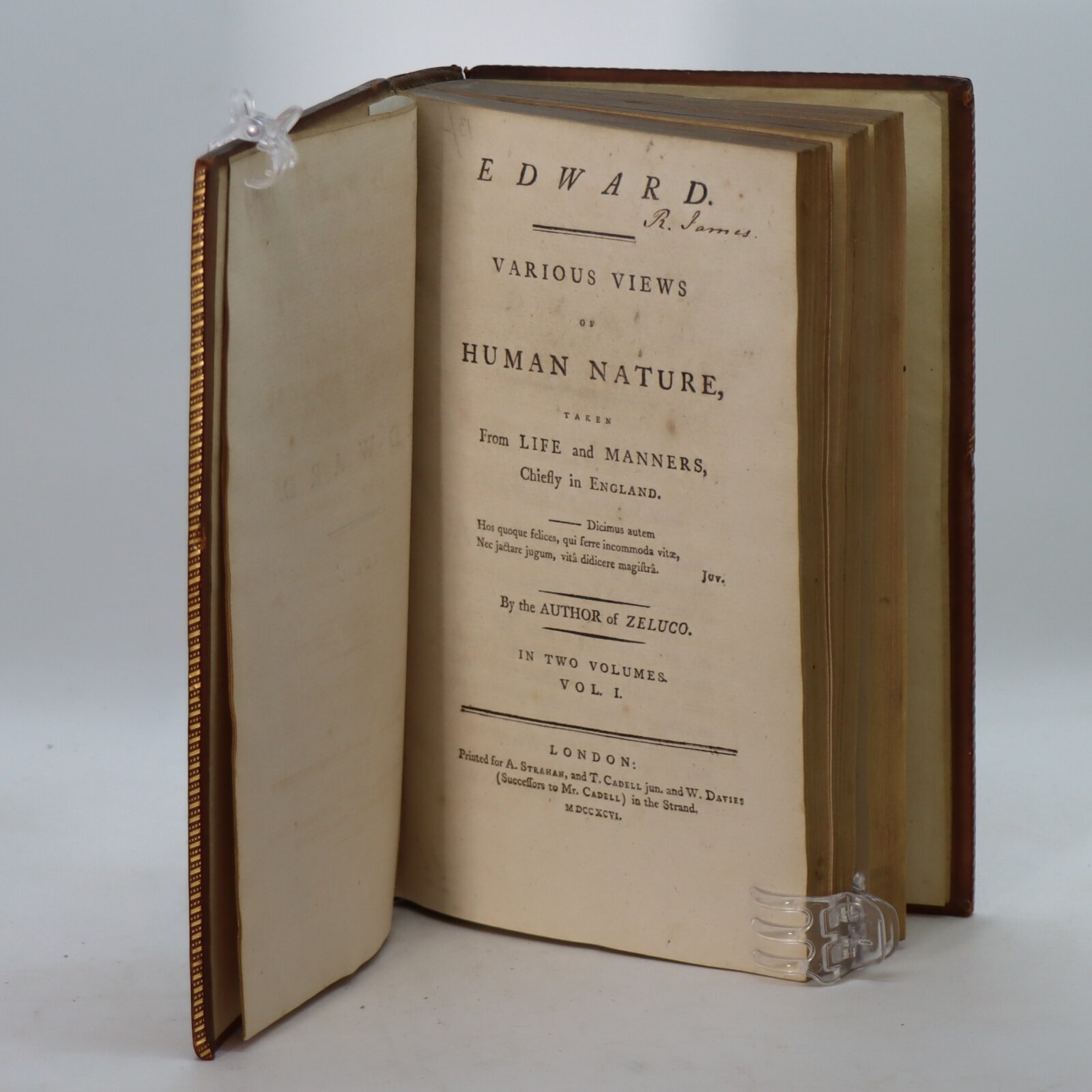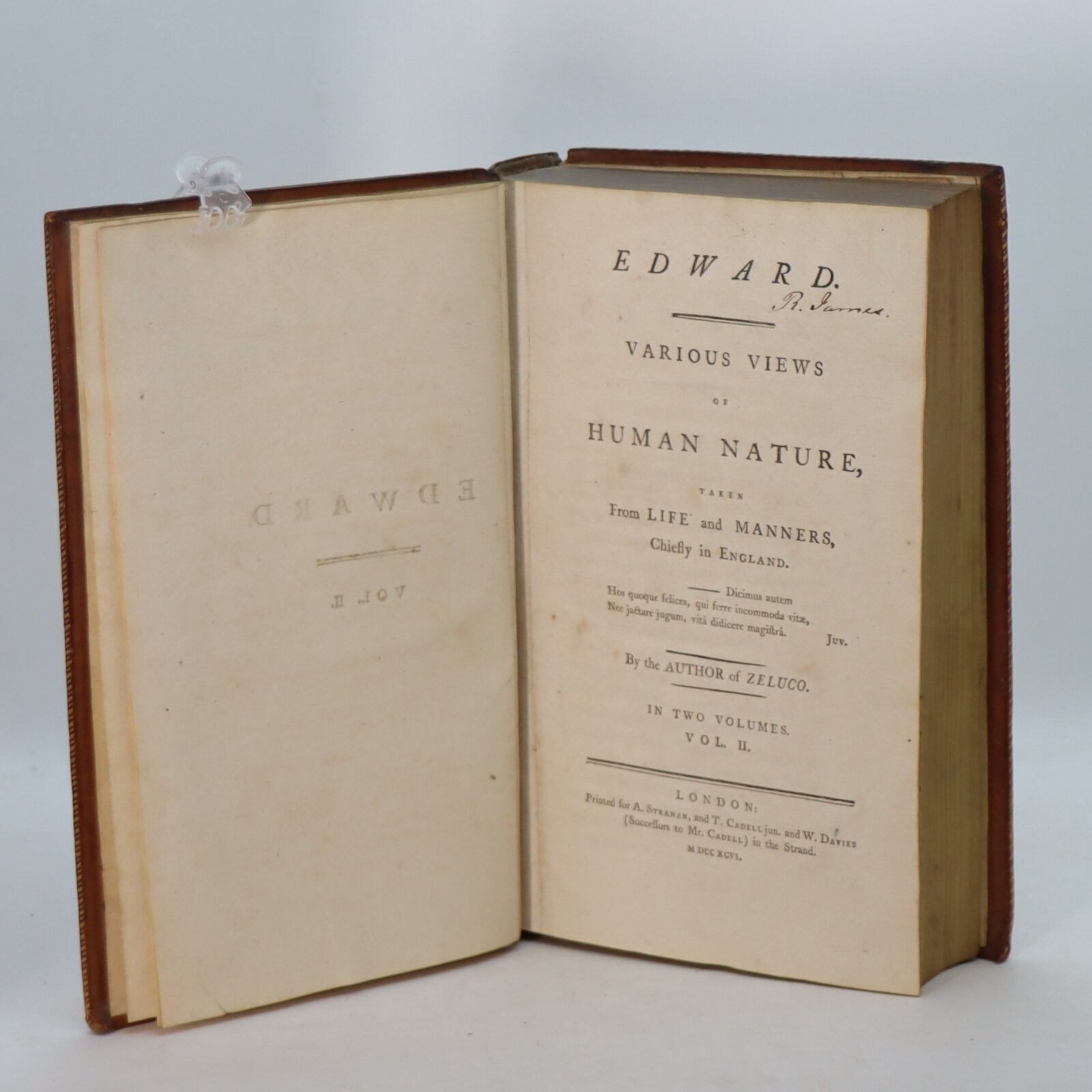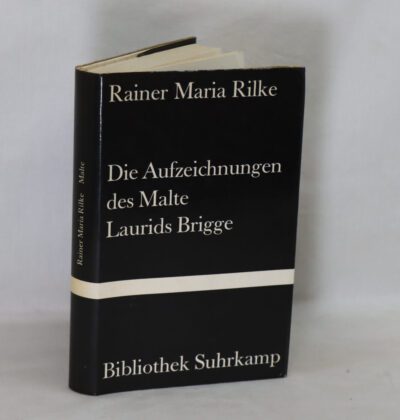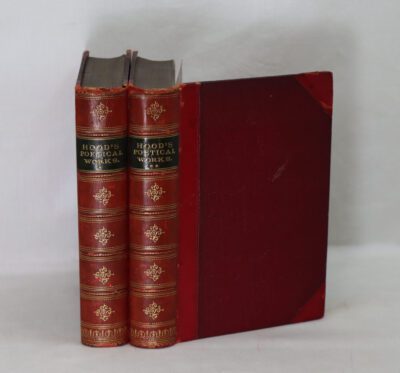Moore's Edward. Volumes 1 & 2.
By Thomas Moore
Printed: 1796
Publisher: A Strahan T Caddell. London
| Dimensions | 15 × 22 × 4 cm |
|---|---|
| Language |
Language: English
Size (cminches): 15 x 22 x 4
Condition: Fine (See explanation of ratings)
FREE shipping
Your items
Item information
Description
Full tan leather with red title plate, gilt lettering and ornate decoration on the spine. Dimensions are for one volume.
F.B.A. provides an in-depth photographic presentation of this item to stimulate your feel and touch. More traditional book descriptions are immediately available.
A superbly bound edition of Moore’s ground breaking work.
First edition of the author’s second novel. Moore (1729-1802) studied at the University of Glasgow, then apprenticed himself to John Gordon, a surgeon who had trained Moore’s friend and distant cousin, Tobias Smollett. His medical reputation lead to a connection with the family of the Duke of Hamilton, whose son spent five years with Moore on a grand tour of Europe. Moore’s first book, A View of Society and Manners in France, Switzerland, and Germany, was published anonymously in 1779, and established his literary reputation. The character of Moore’s first novel Zeluco, the tale of a villain who spreads misery and desolation, is the opposite extreme of the character of this, Moore’s second novel.
Zeluco is a 1789 novel by Scottish author John Moore that centres on the vicious deeds of the eponymous anti-hero, the evil Italian nobleman Zeluco. The novel’s full title is Zeluco: Various Views of Human Nature, Taken from Life and Manners, Foreign and Domestic. A combination of proto-Gothic villainy and Enlightenment rationality, Zeluco contains both main plot incidents and lengthy sections of social commentary.
Critical Response to Zeluco
Zeluco was immediately and immensely successful. Although anonymous, the book was generally attributed to Moore because of its similarity in style to his travel literature. Most reviews at the time of publication lauded both the literary technique and moral message of the novel. In June 1789, Scots Magazine asserted that Zeluco “is not a common novel,” praising Moore for creating a work of lasting merit and a positive moral message “which, until men change their natures, can never be too often inculcated, or too powerfully enforced. The European Magazine and London Review expressed a similar opinion in October 1789 and placed a particular emphasis on Moore’s ability to express serious messages in a “lively style” and create a narrator who is a “laughing philosopher.” The September 1789 issue of The English Review, however, was highly critical, deeming Zeluco a merely mediocre novel. The reviewer disparaged Moore’s many subplots and asides as useless digressions and takes issue with his mocking portrayal of priests and his favorable portrayal of physicians.
Zeluco provided inspiration for the title character of Lord Byron’s poem Childe Harold’s Pilgrimage and was transformed into a stage play in 1812. Anna Laetitia Barbauld’s glowing review in an 1810 edition of The British Novelists seemed to indicate the novel’s lasting success. Zeluco’s popularity faded, however, and the novel remained out of print from 1827 to 2008.
Twentieth century literary critics tended to ignore Zeluco, and their opinions of the book were generally not favourable. Patricia Meyer Spacks asserts that Zeluco’s wholly evil character is flat rather than compelling, and that Laura’s sensibility serves only to remove all traces of her agency. She claims that the combination of Zeluco’s and Laura’s intrinsically opposite personalities leads only to a “narrative stalemate.” Pam Perkins, however, argues against such negative criticism, maintaining that the central plot of the novel was not Moore’s sole focus. Examining Zeluco’s Enlightenment-driven narrative style and incisive social commentary, she contends, can offer new insights into life at the end of the 18th century.
John Moore FRSE (1729 – 1802) was a Scottish physician and travel author. He also edited the works of Tobias Smollett. His novel Zeluco (1789), a close analysis of the motives of a selfish profligate, produced an impression at the time. Lord Byron said that he intended Childe Harold to be a poetical Zeluco. Moore’s other works include sketches of society and manners in France, Germany, Switzerland, Italy and England (A View of Society and Manners in France, Switzerland and Germany, London, W. Strahan & T. Cadell, in the Strand, 1779, 2 vol.; A View of Society and Manners in Italy, with anecdotes related to some eminent characters, London, W. Strahan & T. Cadell, 1781, 2 vol.) were also popular during his lifetime.
Mordaunt. Character Sketches of Life, Characters, and Manners, in Various Countries; including the Memoirs of A French Lady of Quality was an anti-French Revolution novel in three volumes. It took the form of 34 character sketches of politicians, royalty, generals, the wealthy, and the celebrity of the day. It also contains Moore’s observations as he travelled throughout Europe in the last years of the 18th century. Accounts of the heroic feats of a dashing British officer included reference to Moore’s son, General Moore.
Condition notes
Want to know more about this item?
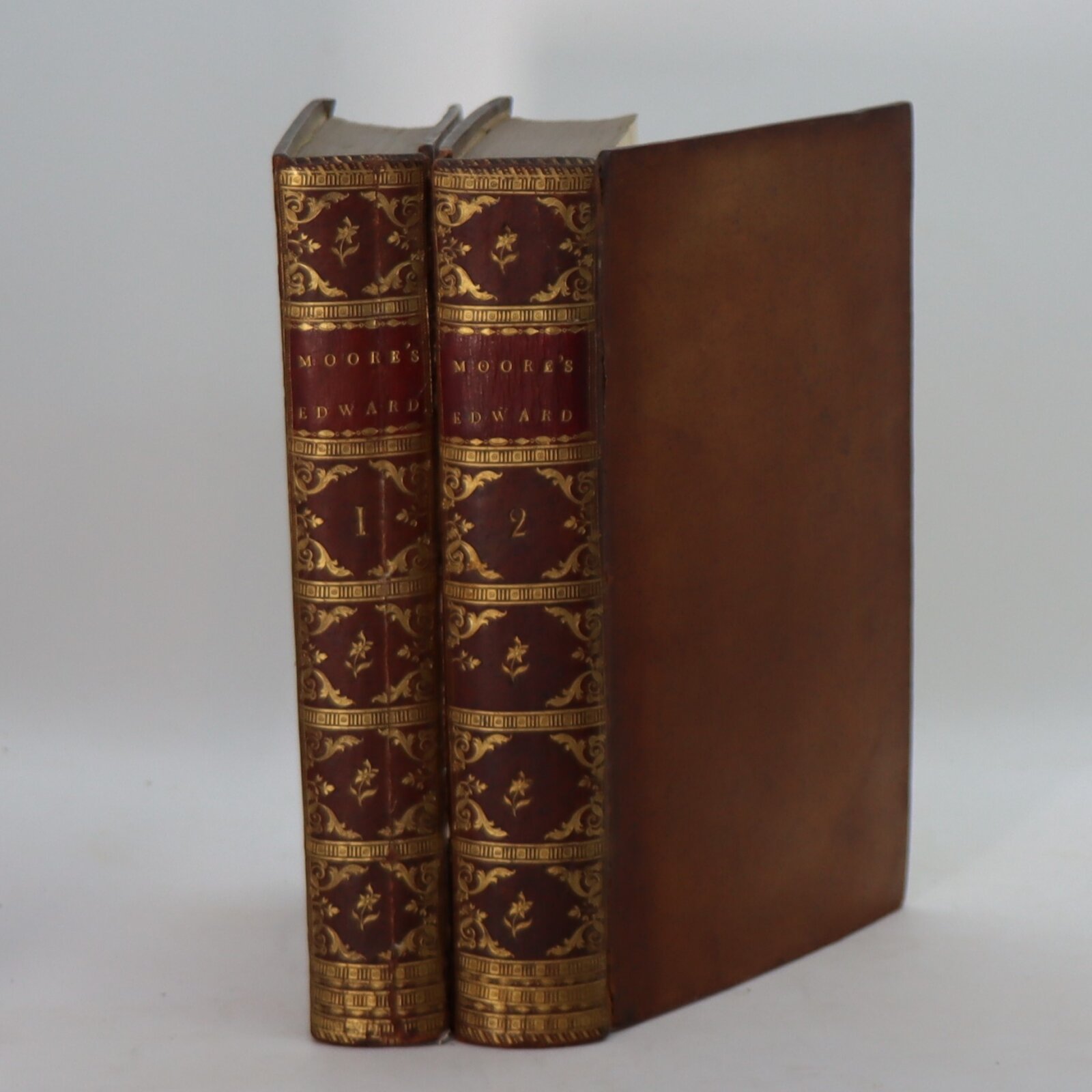
Related products
Share this Page with a friend

